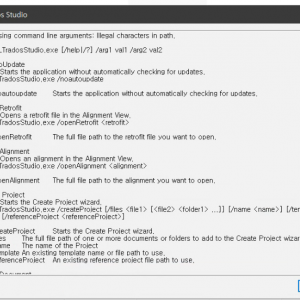A translation invoice is a document for translators to claim payment from an agency for their translation services. You might wonder why you have to send a document in order to get payment you rightfully deserve for a service you provided, but in a lot of cases, an invoice is a necessary document for both the agency as well as the translator. This is especially true if the PM of the agency doesn’t do the accounting work. It is also required to clarify the agency’s business statistics.
On the other hand, if a translator wants to know how much he/she earned this month and which agency or which project the income was generated from and wants to strategically adjust that from a long term perspective, he/she must systematically make and manage invoices as very basic groundwork. Using this as the background, a translator can also check whether the proper amount was paid, create the year end statistics, and report taxes. Analyzing the work that you’ve done and establishing plans for your future requires the basic data of the invoice as the basis for an accurate analysis. If you make up various statistics and draw a graph (I don’t actually do this kind of work. My son makes me a good chart through Excel), you will see how you work and the direction you should head in next.
The problem is that the invoice is a document that translators do not like to make and actually find quite annoying. “Whew, I have to do that, too?” That’s what I thought in the beginning. But you must do it. The advice I would like to give in processing invoices is to make an invoice system that is as simple as possible. The point is that this kind of thing is necessary, so you have to do it, but there is no need to spend excessive time and money on it. You won’t be paid more or more quickly just because you have a nice-looking invoice.
If you search for “invoice format” or “invoice template” on Google, you will get lots of useful results. Among them, find a very simple template that you think would be suitable for a business, download it, fix it up a bit, and then use it.
ProZ offers a free online invoice system, but the simple system that I’ve developed and used over the years is working well, so I am just ignoring it as I don’t want to unnecessarily invest my time in such things. There are also a lot of ads on the Internet selling invoicing systems for a couple hundred dollars, but you should pay them no mind. I will introduce the system that I am using here. I’m not telling you to use exactly what I use, but am just using my template as an example to show you how simple an invoice system can be.
First let’s look at a picture.
 Loading...
Loading...
The above-seen file is what I actually use. You can download the above file and use it as a template to create your own invoices.
If you look closely at the image above, you can see that it has all the elements necessary for invoicing. The elements that must be included in the invoice are as follows. Look and see where and how the elements below have been included in the invoice image above.
Sender’s (translator’s) information
The name and address, email or phone number, website, PayPal address, etc.
Recipient’s (client’s/agency’s) information
Name and address, website, etc. If necessary, you can include the PM’s name as it might be handy for the agency’s internal confirmation.
Invoice number
This is information required for the translator’s own organization. When making the above image into a PDF, the file name will be chosen as “2016 [company name] invoice 16016.” Excel is a smart program, so all you have to do is first set the file name as “2016 [company name] invoice” and then add the actual sheet number “16016” to the end. (This means it is the 16th invoice that you’re sending to [company name] in 2016.)
Invoice date
This date refers to the date the invoice was made, and you can set this as the date you finish and send your translation file. This is why the first thing you must do after you finish a project is to make an invoice for that project, not thinking about or taking care of other projects. That way, you can send your invoice to the agency along with your target file. Then you won’t have to worry about forgetting to send an invoice, and by doing this, you are really completely finishing that project. If you make your invoice later, your payment date will also be later. Trying to appeal to agencies with excuses along the lines of “but I actually finished the project a month ago” will have no effect. You see, agencies pay the translation fee at a set time after receiving the invoice (this all depends on what the agency decided to do. Payment can be immediate, take 1 week, 30 days, 45 days, or even 60 days).
Payment date (due date)
An invoice is not an offer or appeal asking for money from the agency, but a just and strict demand. The translator provided a translation service according to the contract (PO), so the agency has an obligation to pay the price. But an invoice that doesn’t even give a deadline for the payment looks shabby. After clearly agreeing upon a payment date when first entering into a contract with an agency, the agency must unconditionally specify that date (30 days from the invoice date, for example) as the payment due date and make a payment (you can automatically calculate that date and include it in your invoice by using Excel’s formula function). If the agency does not send the money by that date, the agency must be held responsible.
PO information
Agencies need to internally check whether an invoice is justified, and the system that allows this is the PO. So, the most important information in the invoice (although all the rest of the information is important as well) is the PO number. [Further explanation: The PO also acts as a mini-contract for a project. This is because PO means purchase order. This is also referred to as a work order, commission, etc. After you receive the PO, even if the project gets cancelled, you will be compensated at least for the amount of work you finished before the cancellation.]
Project information
You can enter the file name you worked on, word count or unit price, etc. (or, for turnkey projects, the PO price that you agreed upon).
Charge for translation
This is where you clearly state how much an agency must send you. If there are multiple files, combine them to get the total amount, and if there are taxes, add them to the total.
My explanation probably makes this seem very complicated, but once you make your first invoice for a company, you won’t have to change the template too much starting from the second invoice, so it’s really not that complicated. This is the benefit of Excel. Also, if you continue to name your sheets 16001, 16002, 16003 and so on, you will be able to keep one year’s worth of invoices to that company in a single Excel file. Then, when the year changes to 2017, you can use the “save as” function to create a new file and name your sheets 17001, 17002, 17003… and so on. When going from one sheet to the next, if you right-click on the sheet name (16003, for example), there will be a function called “move or copy.” If you use this, everything including the format gets copied, saving you a lot of time.
I’ve used this system for around 9 years, and so far, I’ve never had a problem caused by my invoices. You might be able to envision or purchase a better system, but if you use Excel, you will be able to create invoices at no cost at all. So I hope you don’t lose any sleep over invoicing and save yourself time using this kind of simple invoicing system.
If you would like to read other useful information and resources, visit the How to Become a Translator category page to see more posts in that category.
Attention, please!
I created a course on translator’s accounting system: Accounting System for Freelance Translators E-Course.








